Zoë Crossland and Francisco Nahoe
In November 2024, Columbia University returned ancestral remains to the Rapa Nui people of Easter Island. Their representative, Fr Francisco Nahoe OFMConv., traveled to campus to take possession of a cranium removed from the island in 1916 by an American research expedition. The story of this recovery effort highlights both interdisciplinary teamwork across academic departments at Columbia and the university’s commitment to the rights and dignity of Indigenous peoples.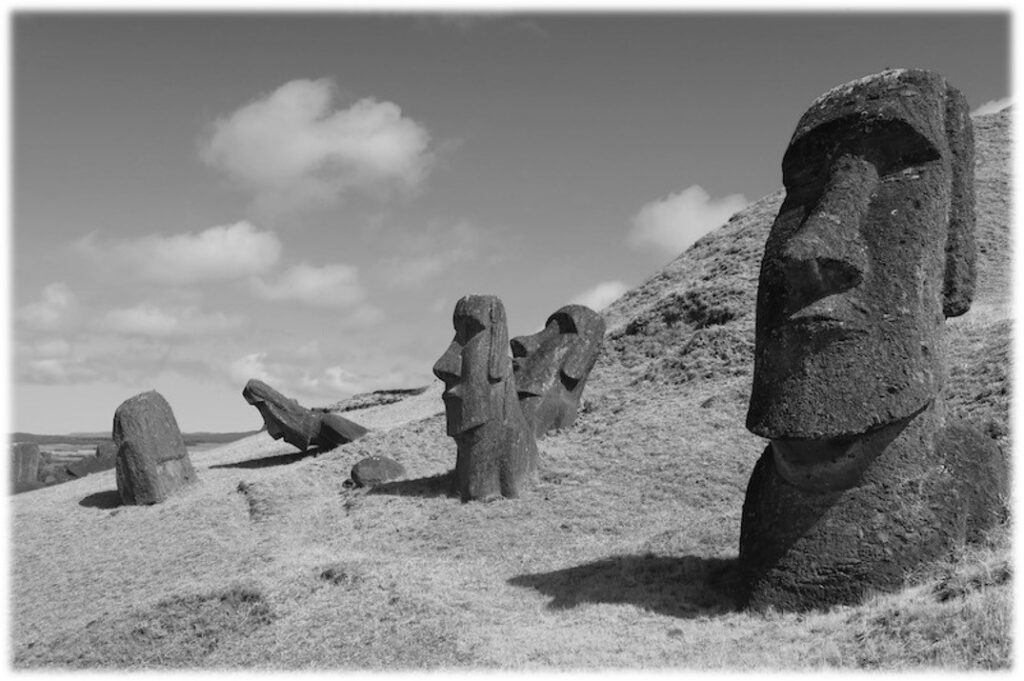
Quarry at Rano Raraku where ancient matamu‘a carved the monumental statuary known as moai
The process began in April 2024 when a Catholic priest of the Rapa Nui ethnicity contacted Prof. Claudio Lomnitz, Chair of the Department of Anthropology on behalf of Te Mau Hatu (Council of Elders) and CODEIPA (Comisión de Desarrollo de la Isla de Pascua). Together with Ma‘u Hēnua, the Rapa Nui Park administration, these ethnic agencies represent the Polynesian people of the island in matters concerning their cultural patrimony.
Fr. Francisco wrote to say that they believed Columbia held custody of the remains of their tupuna (ancestors). He referenced reports that, in December 1916, the Carnegie Expedition to Easter Island collected a human cranium which eventually came to the university. The Departments of Anthropology and Ecology, Evolution & Environmental Biology undertook a review, but could find no reference to the expedition or the cranium. Record keeping in the early 20th century was inconsistent and poorly managed. If any records had existed, they had unfortunately disappeared long ago, meaning that we could not be certain whether the cranium was still held by Columbia, or to identify it if so.
Fr. Francisco further specified that the name Carnegie referred both to the expedition vessel itself, a brigantine yacht skippered by James Percy Ault (1881-1929), and to the fact that the Carnegie Institution of Science sponsored the research. He also provided the name of a “Norman Meisenker,” presumably an expedition member, who might have uncovered and removed the cranium from an ahu on the island. Prof. Zoë Crossland from the Department of Anthropology then reached out to Kevin Schlottmann, Head of Archives Processing at the Rare Book and Manuscript Library, to see if the university archives held any more information.
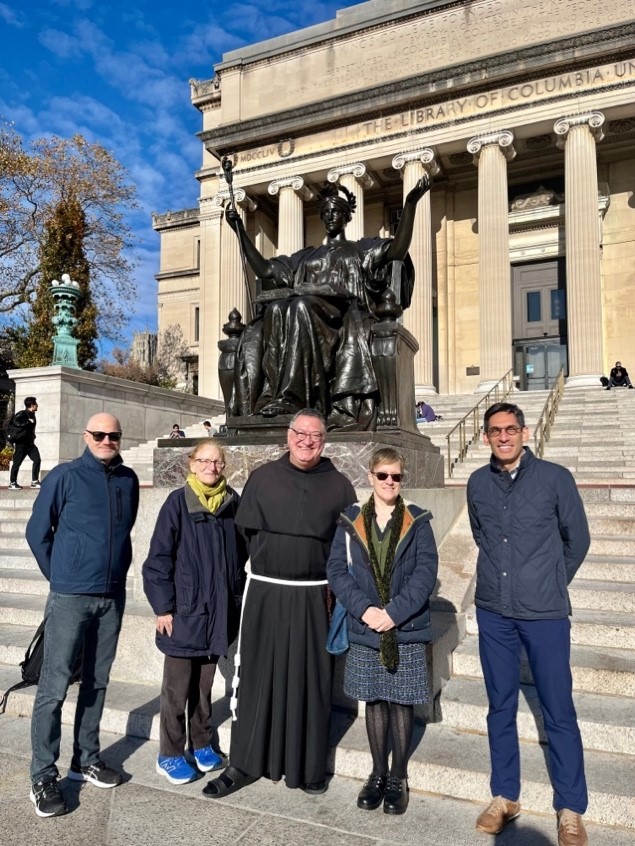
Kevin Schlottmann, Head of Archives Processing, Rare Book and Manuscript Library; Dr. Jill Shapiro, Ecology, Evolution & Environmental Biology; Fr. Francisco Nahoe OFMConv, Te Mau Hatu o Rapa Nui; Prof. Zoë Crossland, Anthropology; Prof. Miguel Urquiola, Dean of Social Science
Schlottmann found a list of the ship’s personnel and realized that the donor must have been Norman Meisenhalter. His investigation then turned up a 1934 German-language article by Bruno Oetteking (1871-1960), who collaborated with Franz Boas on the 1897-1902 Jesup North Pacific Expedition and taught courses in anthropology and evolution at Columbia from 1920 to 1938. The opening paragraph reads (in translation):
The physical anthropology department of Columbia University, in the year 1930, came into possession via gift, of a skull from Easter Island, that should be a typically good representative of the original inhabitants of the island. The donor, one Mr. Norman Meisenhelter, obtained the skull on location, as a member of the staff of the research yacht Carnegie in 1916.
More importantly, the Oetteking paper provided photographs from which Dr. Jill Shapiro was able to identify the cranium, which had been held in the stewardship of Ecology, Evolution & Environmental Biology, but had previously been unidentified. Now at last, the University could begin to address the repatriation request from the people of Rapa Nui.
An overseas territory of Chile, Rapa Nui does not fall under the scope of the Native American Graves Protection and Repatriation Act of 1990. In effect, Columbia found itself under no legal compulsion to repatriate. Even so, as the 2024 Final Report of Commission for the Ethical Treatment of Human Remains of the American Anthropological Association points out, the ongoing institutional curation of the bones of the ancestors of Indigenous peoples implies clear ethical considerations. In the case of Easter Island, Euro-American scientific expeditions routinely opened traditional graves and exhumed remains with only the permission of colonial administrators, not the Rapa Nui themselves.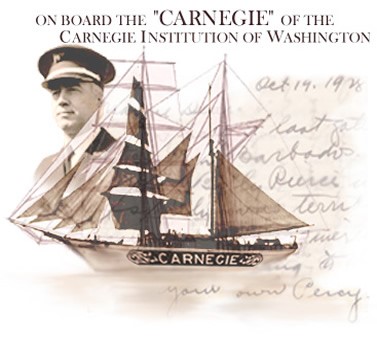
Cover of A Scientist at Sea which highlights the life and work of J.P. Ault
While NAGPRA may foster an ethos of repatriation, it offers no roadmap for international activities of the kind requested by the Rapa Nui, so Crossland reached out to Remi Silverman and Agnetha Jacob-Chen at the Office of General Counsel. They, in turn, consulted Fr. Francisco, who provided them with documentary records generated from five other US universities and a private collection in Canada which had previously allowed the Rapa Nui to recover ancestral remains from them. Working analogously from a wider range of cases, the Office of General Counsel evaluated and documented the request of this Indigenous Polynesian community of Easter Island, as well as the responsibilities and procedures of the university. On the day before Thanksgiving, Columbia handed over the Rapa Nui ancestral remains in its custody to Fr. Francisco.
On 16 December 2024, the ancestral remains from Columbia and four other US institutions — Indiana University in Bloomington, the University of Minnesota, the University of Kansas, and SUNY Binghamton — arrived in continental Chile en route to the island.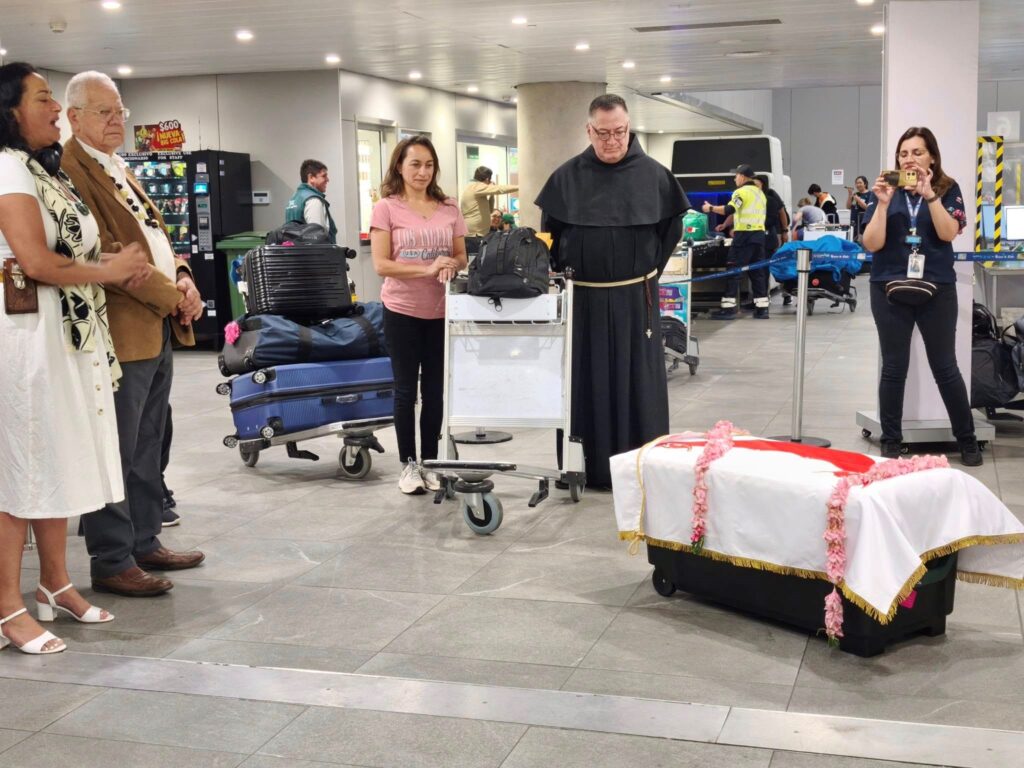
At customs in the Santiago International Airport: Tarita Rapu, former governor and CODEIPA repatriation committee member; Carlos Edmunds Paoa, President of Te Mau Hatu; Susana Nahoe, archaeology consultant to Te Mau Hatu and Ma‘u Hēnua Board member; Fr. Francisco Nahoe OFMConv, delegate for Te Mau Hatu in the US and Canada
Chilean officials from the Servicio Nacional de Aduanas and the Servicio Nacional de Patrimonio — an agency under the Ministerio de Cultura, Artes, y Patrimonio — joined the Rapa Nui delegation who received the ancestral remains chanting in the Rapa Nui language.
Afterwards, the Rapa Nui delegation took the remains from the airport to the Santuario de la Inmaculada Concepción in San Ramón, where the Conventual Franciscan friars kept them overnight. On the following day, the‘ivi tupuna, or bones of the ancestors, traveled 3,700 km by air from the continent to the island.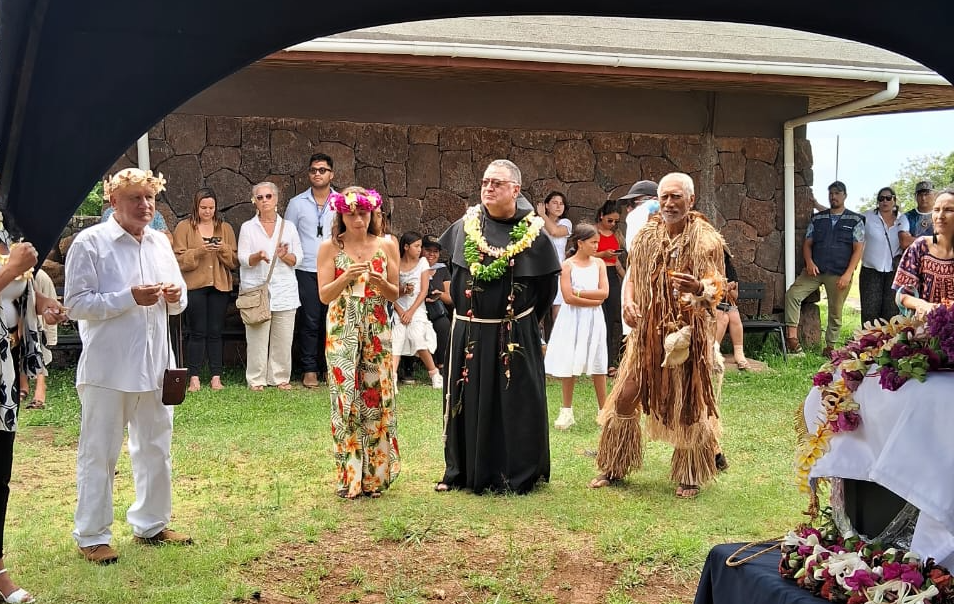
At the traditional karaŋa in the Tahai precincts on Rapa Nui: Zoilo Huki Atamu, Te Mau Hatu; Susana Nahoe, Ma‘u Hēnua Board; Fr. Francisco Nahoe OFMConv; Joel Huki Atamu, Mahiŋo Rapa Nui
On behalf of the Rapa Nui tupuna and their living descendants, Carlos Edmunds Paoa, the President of Te Mau Hatu, communicated his deep gratitude to the faculty and staff of Columbia for the university’s long custody of the remains of the ancestors, and especially for their return.


